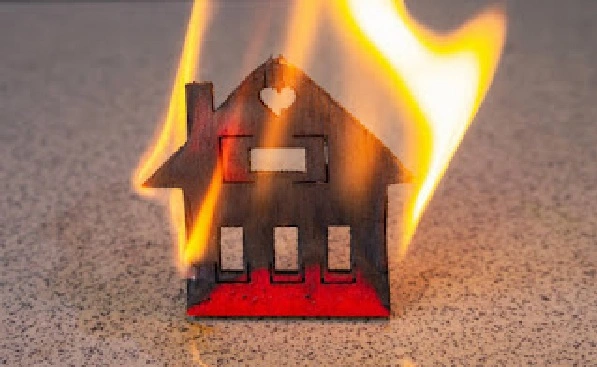Home security is a top priority for any homeowner, and one of the most effective ways to protect your property is by purchasing a fire insurance policy. These policies not only provide financial peace of mind but also safeguard your most valuable investment against unexpected events. In the event of a loss, you’ll be able to cover repair or reconstruction costs without depleting your savings.
Moreover, many policies include additional coverages that protect your personal belongings and may even cover temporary accommodation expenses. In this article, we’ll thoroughly examine the fundamentals, benefits, key features, and factors to consider when choosing a home fire insurance policy, ensuring you make informed decisions to guarantee peace of mind for yourself and your family.
Basic Coverage:
Fire insurance policies are primarily designed to provide financial protection against damage caused directly by fire. This basic coverage typically includes the repair or full/partial reconstruction of the home’s structure—including walls, roofs, floors, electrical systems, and other fixed elements—as well as the replacement of personal belongings affected by the fire, such as furniture, appliances, clothing, and other household items. It’s important to note that the exact scope of this coverage can vary depending on the insurer and the specific policy selected.
Additional Coverage:
Beyond direct flame damage, many modern policies extend protection to indirect consequences of a fire. This often includes smoke damage, which can affect surfaces, fabrics, and HVAC systems, as well as water damage resulting from firefighting efforts—a common source of secondary losses. Additionally, many policies cover temporary living expenses (also known as “additional living expenses” or ALE) if the home becomes uninhabitable during repairs, allowing the insured to maintain their standard of living while their residence is being restored.
Damage Assessment:
Following a fire, the insurance company will assign an adjuster or claims specialist to conduct a thorough evaluation of the damage. This professional will assess the extent of the losses and determine the payable claim amount. To streamline this process and maximize compensation, it’s essential for the policyholder to meticulously document all damaged or lost items. Photos, receipts, invoices, or even a pre-existing home inventory can significantly strengthen a claim. The more evidence provided, the smoother and more effective the claims process will be.
Liability Coverage:
A valuable feature of many fire insurance policies is the inclusion of personal liability coverage. This protection applies if a third party—such as a neighbor, guest, or contractor—is injured on the property as a result of the fire or its aftermath. The policy may cover medical expenses, legal fees, and potential settlements or judgments, shielding the homeowner from significant financial liability arising from such incidents.
Extended Coverage:
Depending on geographic location and local risk factors, some policies offer optional or automatic extensions for fire-related perils such as wildfires (especially relevant in rural or mountainous areas), explosions, lightning strikes, or fire-related vandalism. However, not all standard policies include these risks by default. Therefore, it’s crucial to carefully review policy exclusions and specific terms before purchasing to ensure adequate protection for your unique circumstances.
Replacement Cost vs. Actual Cash Value:
When selecting a policy, it’s vital to understand how your claim payout will be calculated. Replacement cost coverage ensures you receive the amount needed to replace damaged items with new ones of similar kind and quality, without deducting for depreciation. In contrast, actual cash value (ACV) accounts for the item’s age, wear, and depreciation, often resulting in a significantly lower reimbursement. While replacement cost policies typically come with higher premiums, they offer far more comprehensive and realistic protection in the event of a loss.
Prevention and Mitigation:
Finally, many insurers actively encourage fire prevention through incentives. Homeowners who install early smoke detection systems, automatic sprinklers, accessible fire extinguishers, or upgrade outdated electrical wiring may qualify for premium discounts or access to safety consultation programs. These proactive measures not only reduce the likelihood of a fire but also demonstrate responsibility to the insurer—potentially facilitating smoother policy renewals and future claims.

